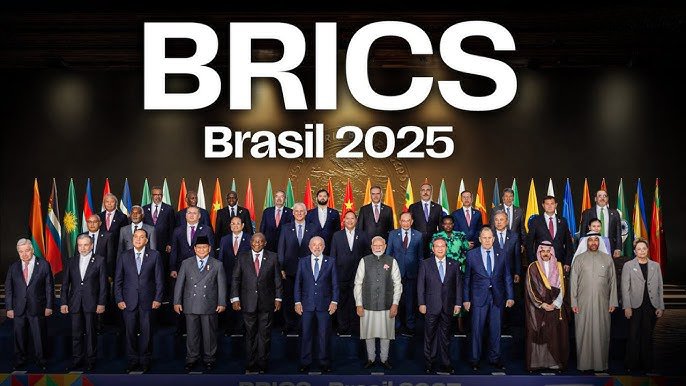The New Architecture of Economic Coercion
Over the past decade, a new form of geopolitical contest has emerged — one not fought with armies, but with tariffs, sanctions, and technology restrictions. The United States, under successive administrations, has weaponised economic interdependence to protect its strategic interests. The so-called “rules-based order” increasingly appears to be an order defined by the rule-makers themselves.
India has often found itself caught in the crossfire. American tariffs on steel, aluminium, and other exports; visa restrictions on technology professionals; and pressure to limit energy imports from sanctioned nations have collectively tested New Delhi’s diplomatic equilibrium. Washington’s expectation that India align fully with Western strategic postures — particularly in isolating Russia or countering China — has been met with nuanced restraint from India.
Instead of succumbing to coercion, India has leveraged dialogue to balance principles with pragmatism. While deepening its engagement with the Quad and the Indo-Pacific Economic Framework, New Delhi has simultaneously maintained energy and defence cooperation with Russia, asserting that strategic autonomy remains non-negotiable. This posture, though occasionally misunderstood in Western capitals, has reaffirmed India’s identity as an independent global player rather than a subordinate ally.
China’s Economic Stranglehold and the Challenge of Asymmetry
If the US exercises power through sanctions and tariffs, China does so through control and consolidation. Beijing’s dominance over critical minerals, rare earth elements, and manufacturing supply chains has given it disproportionate leverage in global economics.
For India, this asymmetric dependence is a serious concern. Despite political tensions and border conflicts, China remains one of India’s largest trading partners. The trade imbalance is stark — for every dollar India exports to China, it imports several times more in return. The dependence extends to sectors such as electronics, solar panels, and active pharmaceutical ingredients — areas critical to India’s technological and industrial ambitions.
South Asia, historically a zone of India’s natural influence, has become a theatre of competing interests. The political upheavals in Sri Lanka, the economic crisis in Pakistan, the resurgence of instability in Myanmar, and China’s growing footprint in Nepal and the Maldives have tested India’s regional diplomacy
China’s Belt and Road Initiative (BRI) has further entrenched its influence across South Asia, from ports in Sri Lanka to energy corridors in Pakistan. The debt traps that accompany BRI projects have created new geopolitical realities in India’s immediate neighbourhood, often at New Delhi’s expense.
In response, India has pursued a multi-pronged strategy. The Production Linked Incentive (PLI) schemes aim to reduce import dependence and attract global manufacturers to diversify away from China. Diplomatic initiatives, such as the Supply Chain Resilience Initiative (SCRI) with Japan and Australia, seek to construct alternative networks of trust. Meanwhile, India’s participation in critical mineral partnerships and its renewed focus on domestic rare earth exploration reflect a long-term vision to dismantle the economic asymmetry that Beijing has built over decades.
Turmoil in the Neighbourhood: Managing Proximity and Pressure
South Asia, historically a zone of India’s natural influence, has become a theatre of competing interests. The political upheavals in Sri Lanka, the economic crisis in Pakistan, the resurgence of instability in Myanmar, and China’s growing footprint in Nepal and the Maldives have collectively tested India’s regional diplomacy.
Unlike in the past, wherein traditional aid or political assurances sufficed, today’s neighbourhood diplomacy demands swift economic responses backed by credible strategic reassurance. India’s timely fuel and credit support to Sri Lanka during its worst economic collapse in 2022 demonstrated this evolved approach — combining empathy with assertiveness.
At the same time, the return of the Taliban in Afghanistan has altered India’s security calculus. While New Delhi has engaged in limited humanitarian assistance, it remains cautious of the cross-border implications of extremism and narcotics trafficking. The challenge for India is to manage instability without overextension — a task complicated by the presence of external powers in the region, each pursuing its own sphere of influence.
India’s foreign policy resembles a careful balancing act across multiple axes — the US, Russia, China, and its own neighbourhood. The India-US partnership, once hesitant, is now robust — driven by shared democratic values and a mutual interest in countering China’s assertiveness
Rising Concentration of Global Power
The post-pandemic world has witnessed the consolidation of global power in fewer hands — both state and corporate. A handful of technology giants influence the world’s data architecture, and a small group of nations dominates semiconductor production, energy routes, and financial systems. This concentration of power creates vulnerabilities for developing countries like India, which aspire to rise without surrendering autonomy.
India’s response has been to champion multipolarity — not merely as a slogan but as a strategic necessity. Its leadership in forums such as the G20, BRICS, and the Global South Summit reflects this intent. By amplifying the voices of developing nations on issues such as debt relief, climate justice, and digital equity, India has positioned itself as a bridge between the developed and developing worlds.
Moreover, India’s emphasis on digital public infrastructure (DPI) — from UPI to Aadhaar and the India Stack — has become a model of technological democratisation. In a world where tech dominance translates into geopolitical influence, India’s indigenous digital platforms offer an alternative narrative — one rooted in openness, affordability, and inclusivity.
Defence Collaborations Under Duress
India’s defence partnerships reflect both opportunity and constraint. On one hand, its engagement with the US, France, and Israel has modernised its arsenal and improved interoperability. On the other hand, the same collaborations come under strain whenever strategic autonomy is asserted.
The S-400 missile deal with Russia stands as a case in point. Despite US warnings under the CAATSA sanctions regime, India went ahead with the procurement, arguing that national security considerations must prevail over external pressures. Similarly, India’s steady expansion of indigenous defence production — from the Tejas fighter jet to the INS Vikrant aircraft carrier — signals a long-term vision to insulate its military modernisation from geopolitical disruptions.
However, challenges remain. Delays in technology transfer, dependency on imported components, and the high cost of Western equipment continue to strain India’s defence procurement ecosystem. The lesson is clear — true strategic independence must rest on domestic capability, not diplomatic goodwill alone.
The world speaks the language of interests today. In this new dialect of diplomacy, India has found its own grammar, firm yet flexible, assertive yet accommodative, principled yet pragmatic. India’s challenges are immense, but so is the opportunity. India’s greatest strength lies in building bridges
The Tightrope of Strategic Balancing
India’s foreign policy today resembles a careful balancing act across multiple axes — the US, Russia, China, and its own neighbourhood. Each relationship is marked by convergence in some areas and contestation in others.
The India-US partnership, once hesitant, is now robust — driven by shared democratic values and a mutual interest in countering China’s assertiveness. Yet, India refuses to be drawn into binary camps. Its continued engagement with Russia, particularly in defence and energy, signals a mature understanding of geopolitical realism. Meanwhile, its outreach to the Global South reflects a moral continuity with its post-independence foreign policy ethos — the idea that India’s rise must benefit others, not threaten them.
The Path Forward: Resilience as Strategy
The coming decade will likely test India’s diplomacy more severely than before. As protectionism rises, energy routes shift, and technology becomes the new frontier of conflict, India will need to anchor its strategy in five key principles:
-
Economic Sovereignty: Building resilience in supply chains, critical minerals, and semiconductors to minimise exposure to coercive trade tactics.
-
Technological Independence: Investing in indigenous R&D and trusted digital ecosystems to avoid dependence on monopolistic global platforms.
-
Neighbourhood Stability: Sustaining proactive engagement with neighbours through development, connectivity, and crisis management.
-
Strategic Autonomy: Preserving the freedom to engage with multiple poles of power without compromising national interests.
-
Global Leadership with Empathy: Using India’s diplomatic capital to shape a more equitable world order — one where the aspirations of the Global South find a legitimate voice.
India advocates multipolarity, not merely as a slogan but as a strategic necessity. Its leadership in forums such as the G20, BRICS, and the Global South Summit reflects this intent. By amplifying the voices of developing nations on issues such as debt relief, climate justice, and digital equity, India has positioned itself as a bridge between the developed and developing worlds
The Diplomacy of Self-Confidence
India’s journey through the maze of global realignments is not merely a story of survival but of strategic self-confidence. From resisting economic coercion to asserting technological sovereignty, from stabilising its region to influencing global discourse, India has shown that strategic patience is not weakness — it is wisdom.
The world today no longer speaks the language of empires but of interests. And in this new dialect of diplomacy, India has found its own grammar — firm yet flexible, assertive yet accommodative, principled yet pragmatic.
The challenges are immense — but so is the opportunity. As the world redefines power not by territory or weaponry but by trust, technology, and tenacity, India’s greatest strength lies not in aligning with blocs, but in building bridges.
In that, perhaps, lies the true essence of India’s strategic diplomacy — a quiet resilience that turns pressure into purpose, and challenge into chance.
The writer serves as the BJP Karnataka Spokesperson and Head of the Research Team.






